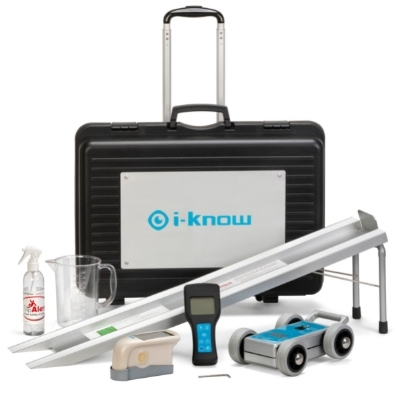Cleaning cannot be the same upon return to office...
Considering many facets, we have put together a few ideas to help guide your return to work cleaning plan.
To adapt to different intensities at different times.
To minimise costs & efficiency of operations.
To suit today's current climate in your relevant state.
To protect against air-based viruses and contaminants.
Can your cleaning plan be scaled?
Different lockdown rules have meant adapting to different levels of restrictions on at times a weekly basis; has your cleaning plan kept up with this?
Your cleaning solution is no longer a single approach that follows a standard routine regardless of external circumstances. It must be scalable to different levels of intensity without increasing your amount of resource spend dramatically. This is where the investment of commercial or industrial cleaning equipment can allow easy scaling to the level of sanitisation your workplace requires, ensuring safety for staff and customers. Most commercial or industrial cleaning equipment such as a floor scrubber is manufactured with different cleaning modes to change the cleaning intensity based on your preference.
Scaling your clean could mean any of the following:
increasing a total floor clean from once a week to 3 times a week.
wiping of work spaces daily during or at the close of the work day.
changing the cleaning mode on your floor scrubber to a heavier scrub pressure or application of water / detergent continuously for a deeper clean.
introducing cleaning measures during a work day rather than before/after common hours.
identifying communal areas such as lunch rooms and adapting cleaning measures to cater for higher concentrated amounts of people.
Changing cleaning schedule to be within given health order curfew hours
Professional cleaning equipment is designed to cope with different cleaning intensities and frequencies, promising a long-term solution to different needs that is scalable at any time.

Are you taking cleaning in-house?
Cutting costs is the topic on every businesses lips, trying to justify what can be done in-house rather than outsourced. Regardless of the cost, lockdowns mean outsourced cleaning staff may not even be able to access your site due to travel restrictions, forcing many businesses to take cleaning upon themselves.
Cleaning can be easily underestimated without a cleaning plan to ensure minimal costs and time-effective deadlines, otherwise businesses risk taking a new cost upon themselves they didn’t anticipate.
make a scope of cleaning (what areas need to be cleaned, how large are these areas, what material are you cleaning, what time, and by who).
Identify high contact points that customers & staff generally are exposed to (door handles, pens, devices such as iPads, cutlery, etc).
match the possible cleaning equipment/tools with the type of area you are cleaning (floor scrubber, sweepers, vacuums & carpet extractors are just some examples).
make a cleaning inventory list and estimate costs (approximate the cost of cleaning chemicals, labour costs, equipment required, etc).
decide on the how. Are you going to manually sweep & mop? Are you going to purchase an automated floor scrubber? Or are you going to hire a commercial cleaning machine? Capital Equipment Hire has a range of agreement options to suit different cleaning needs, from quality suppliers such as Nilfisk and Fimap.
create a workplace cleaning schedule and routine for staff to refer to. Make sure staff are shown best practices for using professional cleaning equipment.
SafeWork Australia has a great cleaning checklist resource that can be used as a guide for businesses.

Clean your air with air purifiers
As we know, COVID-19 is a virus that affects the respiratory element of people, making our trusty face masks a normal accessory for most people nowadays.
But when face masks are no longer mandatory, how do you plan to clean your workplace air? It may appear to be overkill, but workplaces should seriously consider cleaning the air to purify spaces from contaminants that may cause illness and lessen productivity. We are not suggesting that by purifying the air it ‘cures’ COVID-19, but it can possibly neutralise the disease and other contaminants if the right equipment is invested in.
Thankfully, such a device does exist in the market from i-team, the i-air purifier. This device is specifically designed to filter air for areas up to 500 sq/m, helping capture and remove general indoor contaminants such as bacteria, volatile organic compounds (VOC’s) and particulate matter.
Make sure everyone is on the same page.
For some, returning to the office may be a daunting or intimidating experience due to the close proximity to people outside their normal household. For others, they will be more than glad to put this time behind them and want processes returning to the way they were. Cleaning is a psychological factor as well as a physical one. Having in place practices that cater to the expectations of key stakeholders will help with the adjustment back to physical work encounters. Understand staff dynamics and assess your cleaning priorities based on that.
Update your COVID-19 Safety Plan
Now might be a good time to review that COVID Safety Plan once more and make any updates required. A lot has changed since the first COVID outbreak, particularly with the opportunity for vaccinations now. It’s a good opportunity to compare the way you handled business at the start of the pandemic to now, adapting to everyone’s ‘new normal’. Ensure adequate cleaning measures are listed to guide your workplace on best cleaning practices.![]()
The most convincing ideas are the ones that can be proved. i-team have additionally developed the i-know testing kit allowing contract cleaners & dealers prove their level of clean to customers, taking the wow-factor in cleaning to an even greater level. In one easy kit, you can run ATP tests, slip tests, gloss checks & dirt challenges to measure your clean against competitors and other conventional cleaning utilities such as mops.

